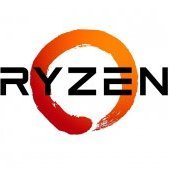Leaderboard
Popular Content
Showing content with the highest reputation on 03/08/18 in all areas
-
3 points
-
I've created a couple of bash scripts to facilitate moving files between disks. As these utilities are touching user data, I'd like to have some experienced users review and/or test them. If there is interest and no major problems, I will look into making them easier to use (first a plugin for command line usage, then maybe gui) 'diskmv' will move a user share directory from one disk to another. It uses a find/rsync command similar to what is found in the standard mover script. It is suitable for merging a user share directory onto a disk that already contains that directory. Files that have duplicate file names on the destination disk will not moved. By default, 'diskmv' will run in test mode and display some information about how directories would be moved, but will not actually move files unless forced. 'consld8' can consolidate a user share directory from multiple disks onto one disk. If a destination disk is not specified, it will pick the best disk based on max usage and available space. By default, consld8 will run in test mode and display some information about how directories would be moved, but will not actually move files unless forced. 'diskmv' is required to actually move files. Example usage: diskmv "/mnt/user/video/tv/Pushing Daisies" disk4 disk1 consld8 /mnt/user/video/tv/Wonderfalls disk3 To get get a help message: diskmv -h I am tagging releases for code that I trust and have used on my real data. Releases are here: https://github.com/trinapicot/unraid-diskmv/releases The master branch has code that I have tested on sample data, but I have not necessarily used it on my real data. These utilities move files around on an unRAID server. I have done my best to prevent any data loss, but there is always a chance something can go wrong. Use at your own risk and please ensure you have everything backed up. Note for those wishing to use diskmv in the process of changing filesystems: The diskmv script will not verify that copied files are the same as the source files. With the default options, diskmv will rsync each file and if the rsync is successful, that file is then deleted before moving to the next file. There is no opportunity to compare the source and destination files. The script is relying on the OS, rsync and whatever else is involved to correctly read data from one disk and write it to another. If you still want to use diskmv to move all the files and directories from one disk to another, you can use this syntax: diskmv -f "" disk1 disk2 Or to keep source files (copy instead of move): diskmv -f -k "" disk1 disk21 point
-
TLDR : This issue is caused by Nvidia driver refusing to be loaded when a virtural enviroment is detected. The Easy Work Around For most scarinos, setting the Hyper-V option to No 1. Go to VMs tab 2. Go to edit VM's Configuration 3. Switch to "Advance Mode" 4. Disable Hyper-V The More "Advanced Work Around" This method is for one's that turning hyper-v off does not help, In this method We'll be patching the nvidia drive. Requirement: Other Windows 10 Machine Decent Internet Connection Decent Disk Space Avaliable OVMF VM (SeaBIOS Won't Work) A USB Flash Drive Step 1: [On External Machine] Install Windows Driver Kit Navigate to the following Link : https://docs.microsoft.com/en-us/windows-hardware/drivers/download-the-wdk Download WDK for Windows 10 Downloading Nvidia CUDA : Navigate to https://developer.nvidia.com/cuda-zone After It has been download, Run it But change the extraction Path to C:\NVIDIA If the following windows are shown DO NOT CLICK CANCEL You must Quickly end It's process tree with task manager (Cancel Will result in the setup deleting the temp files) Now Let's Enable Test Signing, Open A CMD windows as Administrator and type the following in and press enter "Bcdedit.exe -set TESTSIGNING ON" It should Say "The operation completed successfully", Reboot Your Computer If the step is done correctly , You will See the message "Test Mode" on the buttom left of the wallpaper Next, Download nvidia-kvm-patcher by sk1080 from https://codeload.github.com/sk1080/nvidia-kvm-patcher/zip/master extract "patcher.ps1" and "gencert.ps1" to C:\ then Open A Powershell Windows as Administrator type in cd / Set Execution Policy to Remote Sign with "set-executionpolicy remotesigned" Press Y then Enter then type in ./patcher.ps1 C:\NVIDIA\Display.Driver The following Should Happen : Copy The NVIDIA Folder to your usb drive then unplug it and open CMD as administrator again Type in Bcdedit.exe -set TESTSIGNING OFF Open Powershell As Administrator, Type in "set-executionpolicy remotesigned" , This time answer N NOW LET'S CREATE OUR VMS ! Attach the usb drive you just moved your driver in to the unraid system Use Advance Mode Set Hyper-V to No,and Set BIOS to OVMF, attach your usb to the vm too USE VNC as your graphic and Select NONE as Sound Install windows as usual (DO NOT INSTALL THE NETWORK DRIVER) Disable Windows 10 Auto driver installation by [IN VM CONTROLLED USING VNC] 1. Open Control Panel Navigate by following the picture Click Save Changes [STILL IN VM] Next We need to disable driver signature enforcement by running cmd as administrator type in "bcdedit.exe /set nointegritychecks on" then reboot Next move the driver into your desktop Shutdown the VMs enable ACS override patch, Reboot Unraid attach the Graphic card and Sound Device Install The driver, Install Network Card Driver DO NOT UPDATE YOUR DRIVER DONE ! If the step doesn't work try with driver version 372.54 ******If all that doesn't work Here's a list of thing that It fixed client system (TLDR : System specific Fixes) 1. Changing the gpu slot to the second one and put another gpu in the first slot 2. vfio-pci the card 3. Disable Hyper-V 4. Dumping the bios (Work Quite Well) 5. Use VNC With The gpu 6. disable option rom on the gpu (Avaliable on some server board or workstation board, Rarely on consumer board) 7. use an older driver1 point
-
That's good. That would indicate the i915 driver is loading. I am away from my server and won't have access for about 90 minutes. I'll have to get back to you when I am home and can do some tests. Gotta head to a meeting.1 point
-
Like flying a plane with two engines which have twice the probability of an engine failure.1 point
-
It's like you're inside my head! I added mine to the survey. Did you want us to include our Username? A couple notes on my build. My Ryzen server has always been highly susceptible to the stability issues, and I always had to disable C-state Global Control in the BIOS to solve them. For over a month now I've been running with "/usr/local/sbin/zenstates --c6-disable" in my go file, and C-state Global Control enabled, and I am running stable. I don't do GPU passthrough, but I am currently running 4 VM's. I'm running 3 VM's with Windows Server 2016 Standard, each with 4-cores and 16GB of RAM. These are running an enterprise web application that I am developing against. I'm also running a single VM with Windows Server 2016 Datacenter and SQL Server 2016, also with 4-cores and 16GB. This VMs is the database server for the other 3 application servers. Surprisingly, even with 16-cores and 64GB concurrently allocated, the unRAID server is running like a champ. I'm averaging about 37% CPU load, and 57% memory usage. The KVM technology is simply amazing. And I can still stream Blu-ray movies. I'm hammering these servers with requests, approximately 24 XML API requests per second per server, 40 HTTP requests per second per server, and 72 database queries per second, or 6.2 million DB queries per day. My current unRAID uptime is 32 days (when I installed 6.4.1), and the VM uptime is approaching 18 days during this stress test session. My only problem is that the database server ran out of disk storage as the audit table grew so large from all the DB requests... hehehe. Paul1 point
-
If you just drop the drive in then unRAID will start clearing it (takes 8+ hours for a 8TB drive). During that period the array is available for use. When the clear finishes you will be offered the option to format the drive (which only takes a few minutes) and you are then ready to use the disk.1 point
-
Since v6.2 the array won't be offline when adding a new drive, it will be cleared first on the background and only the you can format, but array will be online during the entire process.1 point
-
Also, please note that on the "--device /dev/dri:/dev/dri" line that goes in Extra Parameters, there are two dashes in front of the word "device" and not just one. It is easy to see that as just one dash and that will not work.1 point
-
Not sure of any forum in existence that can get better search results than Google. Which is why this forum should have the search button create a google search for this site instead of wasting peoples time with failed searches.1 point
-
To enable hardware transcoding in Plex, do the following: This goes in the Extra Parameters in the Plex Docker config (you have to enable Advanced View on the docker edit page to see this). Note: this is for the linuxserver.io Plex docker (others Plex dockers may be different): Also, you need some entries in your go file like this (after entering these commands in the CLI): #Setup drivers for hardware transcoding in Plex modprobe i915 chmod -R 777 /dev/dri And in your Plex server Transcoder Settings page you need to enable hardware acceleration1 point
-
In WIndows - Control Panel - Credential Manager. Delete any unRAID credentials so they can be renegotiated.1 point
-
Guys, "problem" with monezising this, is, you need extra cpu and ram per node and the nodes are limited in space. Also you wont get much money for storing, more for uploading It may be you host 200tb and get (i dont know 50€ for it) and it may be you host 100mb but it get downloaded/watched 24/7 (and you get 60€). Also all is split random across the (too large) network. So dont expect much, atleast at the moment. I guess traffic would explode if someone invents some sort of file sharing for this kind of service... @lord I think you need to change like i do. It could happen it uses proxy or upnp or what ever even if the port is forwarded Oo @TE would be cool if u could add https://github.com/calxibe/StorjMonitor so you would have advanced statistics on https://storjstat.com/ My stats (ive set to 1TB):1 point
-
1 point
-
I literally both use this for my unifi-video setup and maintain the docker image with pducharmes, you can pull at any time and it'll be working and stable. We even went a little further and moved to a "release" branch, so now it only gets updated when we do it manually. All the fixes and changes to into master first, only going to release after we've tested them. We also started tagging releases, so you can at any time add ":3.9.2" for example and get back to it. So for this 3.9.3 update, you're on ":latest". If it went wonky, you could just do the pull w/ ":3.9.2" at the end and go back (or w/ the last shittyness as an example, ":3.9.0". Anyway, you should feel safe doing the pull and restarting. 90% of the time it'll be fine 100% of the time!1 point
-
So for Krusader - I got it to work (fixed the rolling gear) copying the settings under Nginx section in https://guacamole.apache.org/doc/gug/proxying-guacamole.html (Note the docker runs guacamole) location /guacamole/ { proxy_pass http://HOSTNAME:8080/guacamole/; proxy_buffering off; proxy_http_version 1.1; proxy_set_header X-Forwarded-For $proxy_add_x_forwarded_for; proxy_set_header Upgrade $http_upgrade; proxy_set_header Connection $http_connection; access_log off; }1 point
-
I'm having this exact issue; I didn't try bridge mode because everything I have read said it has to be host, so I don't know if changing it would have fixed it for me and I'm not near the machine to try it now. This is a brand new UnRaid setup and, if I remember correctly, bonding was on by default. However, I have only one NIC so I disabled bonding, and it shows as disabled in the setup. Not sure if it needs a reboot but maybe I'll try that as well. I will be watching this thread for any further info.1 point
-
Hi, I'm having trouble with this, I installed perl via nerdpack, I installed the plugin, clicked detect, it found the lm78 driver, and then it could not detect any temperature/fan things. All the dropdowns don't have any options in them. Not sure what to do. I saw this, wondering if I need to update lm_sensors and install it87. Can someone advise me on how to do that, since I can't seem to find any package manager or even GCC in Unraid. Thanks!1 point
-
Forgive me if this has already been suggested, but I was just thinking. Over the last few years the way we use technology has changed dramatically. My desktop use has plummeted due to tablet and mobile phone use for instance, enabling me to stop my wife from thinking I've abandoned her on the sofa whilst I'm holed up in my office. Instead I can happily sit on the sofa and remote desktop into my Windows machine or telnet into my Unraid box whilst making the occasional noise to signify vague interest in whatever meaningless detritus we happen to have on the TV. I was just browsing my EBook library on my phone and deciding what to read next and email to my kindle when I had the thought that the webpage I was accessing was really easy to use on my phone and made browsing simple and clear. Next logical conclusion for me was that Unraid isn't quite so easy, requiring pinching and scrolling around the UI to accomplish anything. I'm not a web developer so I have no idea how easy or difficult it would be to implement but I do think that it'd be a good feature and selling point to have a NAS that was manageable from your phone. I know there have been a few experiments with the WebUI over the years and it has come on in leaps and bounds since 4.7, but couldn't find one tailored to mobile use. There appears to be an app for iOS users but I can't test that as I ditched all my Apple stuff for Android a couple of years ago and I'm not necessarily thinking about an app, more just a webui that is suitable for mobile phone & tablet use. Thoughts? I understand if it's a far bigger project than I realise and it's hardly a eureka idea so I'm almost certain it's been discussed before and hasn't happened for good reason but I couldn't find a thread on it but then again I'm tapping this out on my phone...1 point
-
You can use Kodi for Airplay-receiver, but it only works properly with older versions of iOS. For the current version of Airplay there are no proper opensource options. Airplay is closed source, so it has to be reverse engineered to be implemented in non-apple, or non-apple-certified software.1 point
-
Besides, there's the coolness factor! If you can get this to work, then you can say unRAID is so powerful and versatile, it can run its competitors on top of it! That's cool! I'll give you that!. It's pretty funny to think of the competition as just a "feature" on unRAID. Maybe I'll have to give this another go when I have more time.1 point
-
Besides, there's the coolness factor! If you can get this to work, then you can say unRAID is so powerful and versatile, it can run its competitors on top of it! That's cool!1 point









